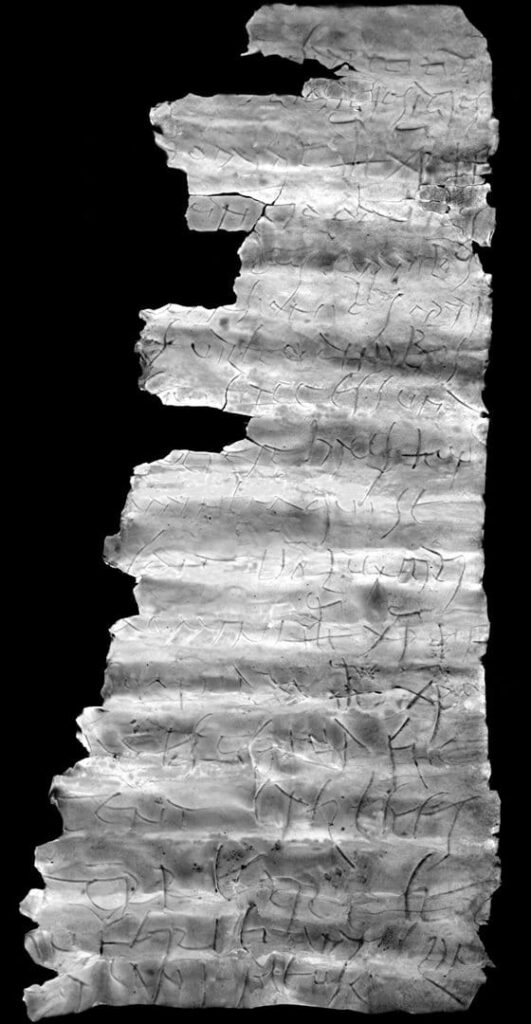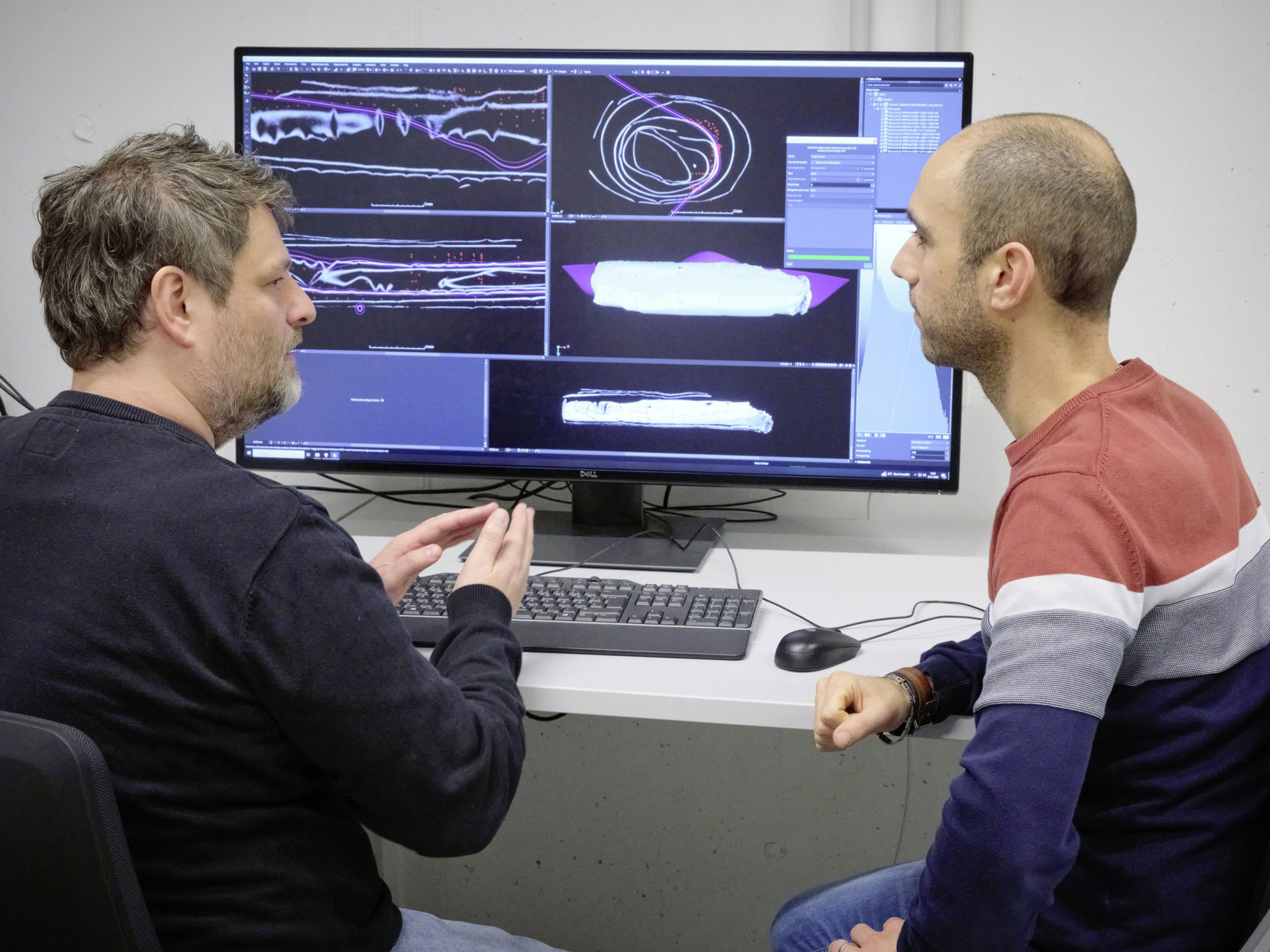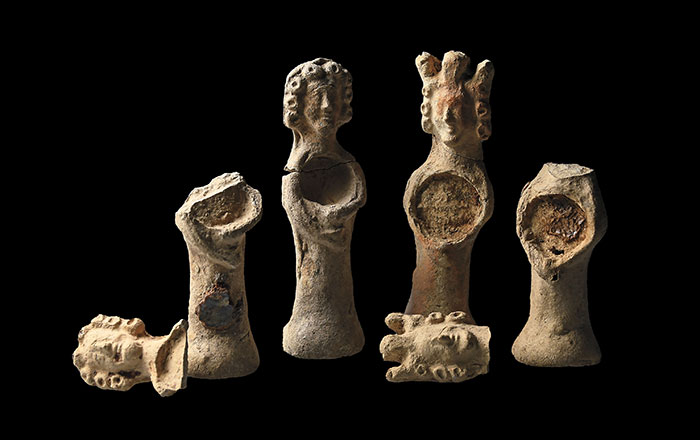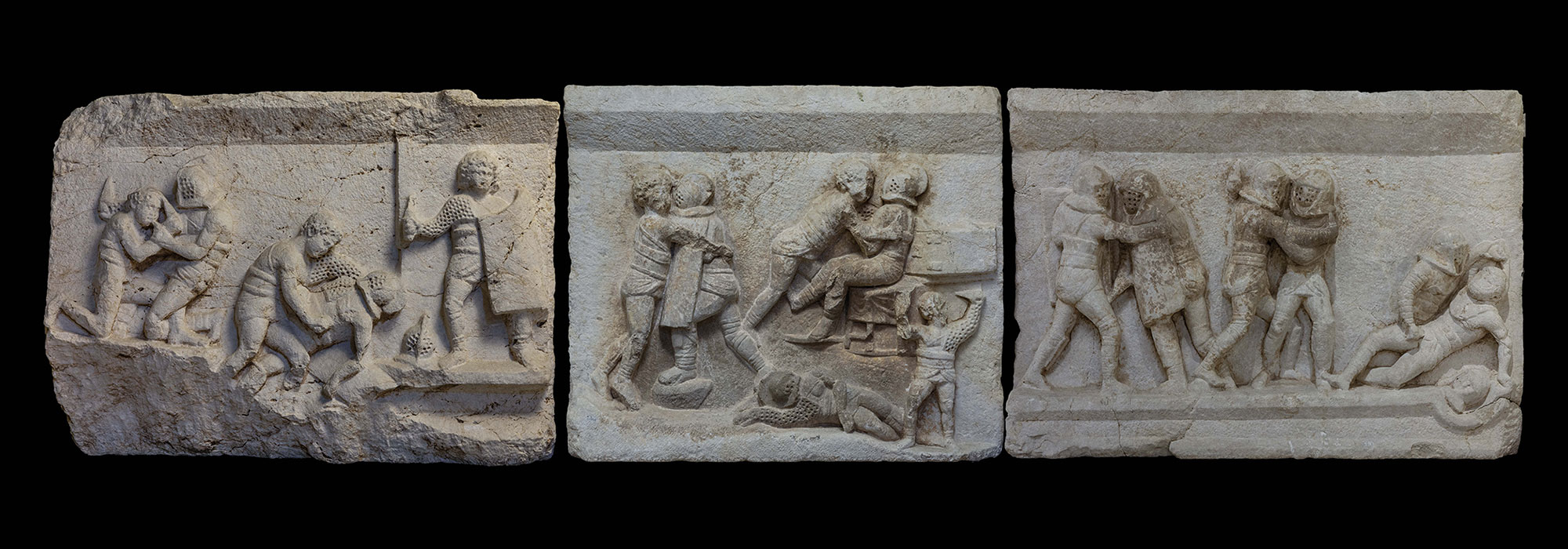
MAINZ, GERMANY—Scientists at the Leibniz Center for Archaeology (LEIZA) have analyzed an 1,800-year-old silver artifact discovered in a grave in Germany in 2018, according to a Live Science report. The object, known as the Frankfurt amulet, is a piece of silver foil that had been rolled up, and was likely worn on a cord, since it was discovered just below the chin of the deceased. “Using CT [computerized tomography], we were able to scan it at a very high resolution and create a 3-D model,” said Ivan Calandra of LEIZA. Once the researchers were able to unroll the silver foil digitally, they were able to view its 18-line inscription. Markus Scholz of Goethe University said that the text, written in Latin, is solely Christian in content, referring to Jesus Christ and Saint Titus. “Normally, such inscriptions on amulets were written in Greek or Hebrew,” he added. To read about an Egyptian artifact that combines both pagan and Judeo-Christian iconography, go to "Artifact: Late Roman Amulet."












